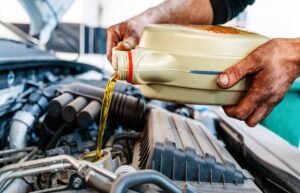Catalytic converters, crucial parts of cars that include precious metals like platinum, palladium, and rhodium, serve as catalysts to change toxic emissions into less toxic ones. The constant supply of scrap material comes from replacing converters in automobiles as they age or sustain damage. For the recycling business to function sustainably and to practise environmental stewardship, it is imperative to comprehend the function of cat converter scrap.
Composition of a Cat Converter
The three primary parts of cat converter scrap are usually the substrate, the precious metal catalyst, and the case. The exterior, which is often composed of mild steel or stainless steel, shields the inside parts. The precious metal catalyst—typically a metallic or ceramic honeycomb structure—is placed on the surface of the substrate. The catalyst, which is made of rhodium, palladium, and platinum—speeds up the chemical processes that change toxic emissions into less toxic ones.
Procedure for Recycling
To recover the priceless precious metals, the recycling process for cat converter waste goes through many steps. The converters are first gathered and taken to recycling centres. After that, they go through a decanning procedure in which the substrate and catalyst are made visible by removing the outer layer. To improve its surface area and aid in the extraction of the precious metals, the substrate is then crushed or shredded. Several techniques, such as heat processing or chemical leaching, are used to extract the catalyst from the substrate. Ultimately, the extracted metals undergo refinement and are marketed to producers for potential repurposing in fresh catalytic converters or alternative uses.
Dynamics of the Market
A number of variables impact the cat converter scrap market, chief among them the pricing of the valuable metals it contains. Traded commodities like platinum, palladium, and rhodium are prone to changes in supply, demand, and geopolitical events. The quantity and grade of precious metals that are recovered from each converter also affect the converter’s market value. In order to guarantee the effective extraction and sale of recovered metals, recycling facilities frequently work in conjunction with metal refiners or manufacturers.
Impact on the Environment
Cat converter scrap recycling has a big positive impact on the environment. Recovering and recycling precious metals lessens the need to mine and refine new metals, protects natural resources, and lowers the negative effects of mining operations on the environment. Recycling also lessens the risk of hazardous emissions and pollutants from the mining and processing of metals.
Regulations and Other Considerations
Rules that control how cat converter scrap is handled, recycled, and sold apply. Recycling facilities need to abide by environmental laws in order to guarantee effective waste disposal and emission control. Laws and industry guidelines are also in place to stop the theft and unlawful trafficking of valuable metals found in catalytic converters.
Conclusion
In the recycling sector, cat converter scrap is essential because it provides a reliable supply of priceless precious metals while lessening the environmental effects of metal extraction and processing. Promoting appropriate recycling practices and optimising the advantages of resource recovery need an understanding of its composition, the recycling process, market dynamics, and regulatory issues. Cat converter scrap will continue to be a valuable commodity as the automobile industry develops, spurring sustainability and innovation in the recycling business.


